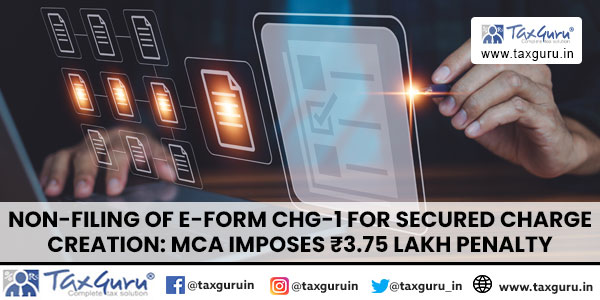This article is discussing all about ICDS VI i.e. Effects of Change in Foreign Exchange Rates. ICDS VI deals with the treatment of transactions in foreign currencies and forward contracts involving foreign currencies and translating the financial statements of foreign operations. This article will cover definition of monetary and non-monetary items, Initial recognition, conversion on last day of previous year, regognition of difference between rates and impact on forward exchange contact.
- ICDS will applicable for computation of income chargeable under the head “Profits and Gains of Business or Profession (PGBP)” or Other Sources”.
- In case of conflict between the provisions of the income tax act and ICDS, the provision of act shall prevail.
Page Contents
Definitions covered under ICDS-VI:
Monetary Items: It means money held and assets to be received or liabilities to be paid in fixed or determinable amounts of money.
Non-Monetary assets: I means assets and liabilities other than monetary items
| ASSETS | MONETARY/NON MONETARY |
| Property, plant and equipment | Non |
| Intangible assets (inc. goodwill) | Non |
| Investments in association | Non |
| Equity investment | Non |
| Biological assets | Non |
| DTA | Non |
| Inventories | Non |
| Debtors | Monetary |
| Other receivable to be settled in cash | Monetary |
| Bank | Monetary |
| Cash | Monetary |
| Share capital | Non |
| Provision for employee benefits | Monetary |
| Finance lease liability | Monetary |
| Bank loan | Monetary |
| DTL | Non |
| Creditors | Monetary |
Initial Recognition under ICDS-VI:
A foreign currency transaction shall be recorded, on initial recognition in the reporting currency, by applying to the foreign currency amount the exchange rate between the reporting currency and the foreign currency at the date of the transaction.
An average rate for a week or a month that approximates the actual rate at the date of the transaction may be used for all transaction in each foreign currency occurring during that period. If the exchange rate fluctuates significantly, the actual rate at the date of the transaction shall be used. i.e. if stock market fluctuates too much, then we can use average rate & apply such rate on all transaction during that period.

Conversion Rules at Last Date of Previous Year under ICDS-VI:
At last day of each previous year:-
(a) Foreign currency monetary items shall be converted into reporting currency by applying the closing rate;
(b) where the closing rate does not reflect with reasonable accuracy, the amount in reporting currency that is likely to be realized from or required to disburse, a foreign currency monetary item owing to restriction on remittances or the closing rate being unrealistic and it is not possible to effect an exchange of currencies at that rate, then the relevant monetary item shall be reported in the reporting currency at the amount which is likely to be realized from or required to disburse such item at the last date of the previous year; and means where closing rate does not show reasonable amount then show if an value which is expected to realize.
(c) non-monetary items in a foreign currency shall be converted into reporting currency by using the exchange rate at the date of the transaction.
(d) non-monetary item being inventory which is carried at net realisable value denominated in a foreign currency shall be reported using the exchange rate that existed when such value was determined.
Recognition Rules for Exchange Differences under ICDS-VI:
(i) In respect of monetary items, exchange differences arising on the settlement thereof or on conversion thereof at last day of the previous year shall be recognised as income or as expense in that previous year.
(ii) In respect of non-monetary items, exchange differences arising on conversion thereof at the last day of the previous year shall not be recognised as income or as expense in that previous year.
Item |
Monetary/Non |
Exchange rate on transaction date |
Closing rate on march 31 |
Exchange rate realized |
Conversion on last date of PY |
Remarks |
P & L recognized |
Debtors |
M |
65 |
Unrealistic |
35 |
35 |
Point b |
(30.00) |
Debtors |
M |
63 |
65.50 |
65.50 |
Point a |
2.50 |
|
Investment in shares |
N.M |
64 |
65.50 |
64 |
Point c |
0 |
|
Inventory |
N.M |
65 |
60 |
60 |
Point d |
0 |
One more example:
Inventory (Non Monetary): Cost $100, NRV (at the end of year) $ 50, exchange rate on the date of transaction Rs 55, closing rate on march 31 Rs 60. Show treatment.
It is noted that in this example ICDS and AS will operate in same manner:
a) Inventory value on date of acquisition: 5500( 100*55)
b) NRV at year end : 2750( 50*55)
c) Impact of reduced valuation without exchange fluctuations: (2750)( a-b)
Impact of exchange fluctuations on year end: 250 {50*5(60-55)}
Therefore inventory value at the year end 3000 ( 2750+250)
Net impact on P &L Rs (2500) (2750-250)
Impact on books of accounts:
Say profit 100000
Less: reduction in value of inventory 2750
Add: Exchange rate fluctuations 250
Net accounting profit and ICDS Rs 97500/-
Effects of Forward Exchange Contracts under ICDS-VI:
(1) Any premium or discount arising at the inception of a forward exchange contract shall be amortized as expense or income over the life of the contract. Exchange differences on such a contract shall be recognized as income or as expense in the previous year in which the exchange rates change. Any profit or loss arising on cancellation or renewal shall be recognized as income or as expense for the previous year.
Example:
If a forward exchange contract is entered in respect of an obligation to pay a vendor in foreign currency after 2 months and the prevailing foreign exchange rate at the inception is Rs 65 and the forward contract is booked at Rs 65.60. in this case premium paid is Rs 0.60. this expense of Rs 0.60 is to be booked over 2 months.
Further , if at the end of the period of 2 months, if the prevailing exchange rate is Rs 66.50, then the exchange difference would be a gain on account of forward contract and booked at the end of period.
The provisions shall not apply to following contract:
(a) for trading or speculation purposes; and
(b) That is entered into to hedge the foreign currency risk of a firm commitment or a highly probable forecast transaction.
Watch and subscribe my channel on you tube for more Tax Videos “ Tax Sathi”
(Republished with Amendments)




























In this case , in the table you have not recognized the exchange difference in case of inventories and also under Point 6(ii) you have stated that exchange difference not to be recognized in case of non monetary items but in the 2nd example you have taken inventory and considered the exchange difference.
Mr. Vaibhav, thanks for the simple article on extremely confusing topic. Please guide me on the following example:-
My company had booked some foreign currency Fixed deposits for the tenure of 5 years in British Pounds from account with a large Indian bank. GBP rate on the date of Foreign of currency FD was say Rs.100 per unit of GBP. Now these foreign currency deposits will mature in next 3 months on say 18 Feb 2018 & the rate on that date is Rs.95 per unit of GBP. so I lost Rs. 5 per GBP invested. How this will be treated under ICDS VI….please guide Thanks & Regards